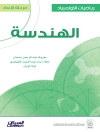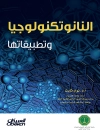This book focuses on what school leaders need to know and understand about leadership for learning, and for learning to read in particular. It brings together theory, research and practice on leadership for literacy. The book reports on the findings from six studies that followed school principals from their involvement in a professional learning program consisting of five modules on leadership and the teaching of reading, to implementation action in their schools. It describes how they applied a range of strategies to create leadership partnerships with their teachers, pursuing eight related dimensions from a Leadership for Learning framework or blueprint. The early chapters of the book feature the use of practical tools as a focus for leadership activity. These chapters consider, for example, how principals and teachers can develop deeper understandings of their schools’ contexts; how professional discussions can be conducted with a process called ‘disciplined dialogue’; andhow principals might encourage approaches to shared leadership with their teachers. The overall findings presented in this book emphasise five positive positions on leadership for learning to read: the importance of an agreed moral purpose; sharing leadership for improvement; understanding what learning to read involves; implementing and evaluating reading interventions; and recognising the need for support for leaders’ learning on-the-job.
Innehållsförteckning
Leadership and Literacy: Principals, Partnerships and Pathways to Improvement; Neil Dempster, Tony Townsend, Greer Johnson, Anne Bayetto, Susan Lovett and Elizabeth Stevens.- Acknowledgements.- About the Authors.- Introduction.- 1. Leadership for Learning Research.- 2. The PALL Approach.- 3. Using Disciplined Dialogue and Evidence to Build a Strong Moral Purpose.- 4. A Focus on Curriculum and Pedagogy.- 5. Shared Leadership.- 6. Professional Learning for both Leaders and Teachers.- 7. Establishing Positive Conditions for Learning.- 8. Schools Finding Alternative Ways to Engage Families and Communities in Children’s Learning.- 9. PALL and Student Learning.- 10. Looking Back to Look Forward.- References.












